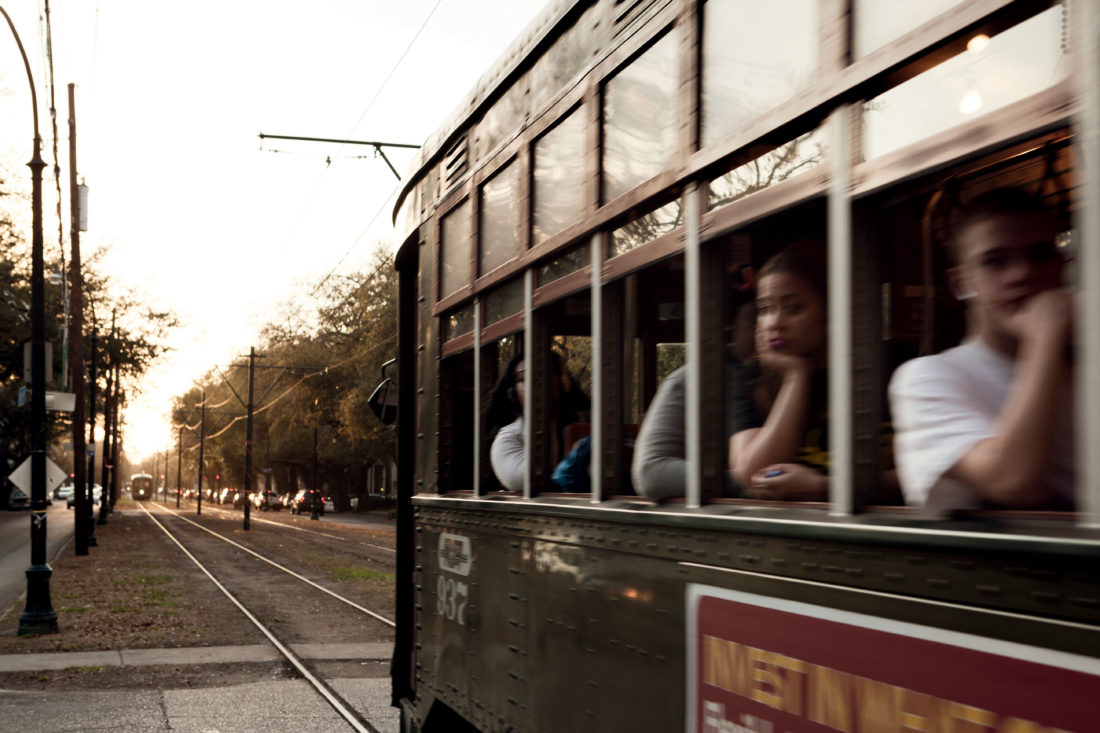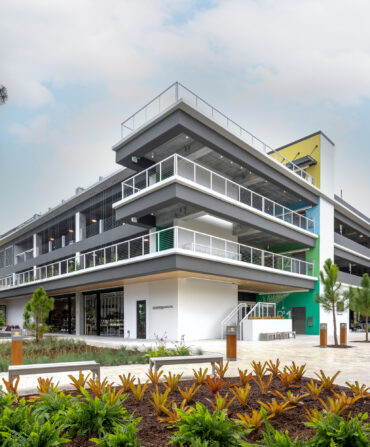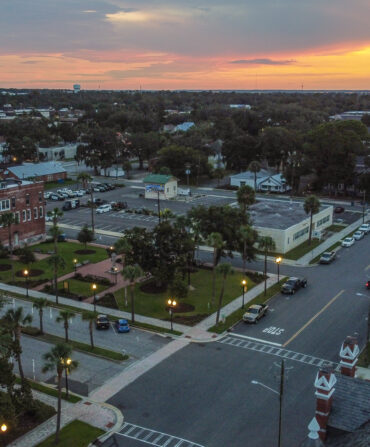In my family’s lore there is a scene starring me as a toddler. On a bright spring day, my father, in a button-down shirt and slacks, carried me in the crook of his elbow along majestic, oak-lined St. Charles Avenue in New Orleans. My parents and I lived in the suburbs east of the city and rarely traveled to hoity-toity Uptown, so we planned to make the most of our day trip and take the streetcar to a restaurant that sold deep-fried seafood and potato salad. But something in the swaying, clanking streetcar scared me witless. I wailed like I’d dropped my ice cream cone, and nothing my parents could do would get me to ride that day.
About a year later, my grandmother, tall and elegant, suggested we spend a day together in Uptown. She had to run errands but said that we would stop for po’boys at a restaurant called Leo’s Caboose. Now, I owned a toy train set—a little red one—and the caboose was my favorite part. There was one catch to this adventure: I had to ride the streetcar. I know I must have hesitated, and she probably would have winked and said something like, “Boy, come get on this streetcar!” She led me by the hand up the step, and I didn’t cry a bit because I would have followed my grandmother anywhere. I’m sure my father knew as much.
My love for the St. Charles streetcar began that day. New York has its subway, San Francisco its cable car. But in my hometown, even in an age of cloud computing and touch screens, the distinctly not modern streetcar reigns. Riding the Christmas tree–green streetcars offers a front-row view of one of the most gorgeous boulevards in all the world. The branches of the oaks toss a nice shade over much of the avenue, while away from the street sit dozens of mansions, with their Greek columns, wraparound porches, and blue-green lawns.
I imagine the streetcars have been scaring little boys and girls in kneesocks since they began running, in 1835. Back then riders would have been traveling to their country homes or even fleeing one of the city’s many yellow-fever outbreaks. By the 1890s, horse-drawn and steam-powered cars gave way to an electrified fleet, and by the 1920s, dozens of streetcar lines covered the city like lace. But when progress came hunting, we, like many cities, replaced our streetcars with buses. Over the next few decades, New Orleans ripped up all those lines, including the one that carried a streetcar named Desire. Well, almost all. Thanks to the work of preservationists, a single line survived—the one my grandmother coaxed me onto.
Until reencountering the St. Charles streetcar as an adult, I’d more or less forgotten about it because I spent most of my time in neighborhoods where the streetcars didn’t run: New Orleans East, where I lived, or by the lakefront, where I went to college. But on my first day of class at Loyola law school in 2000, I frantically searched for a place to park my car and found one on St. Charles. Walking from one side of the avenue to the other, I spotted a streetcar sliding toward me, its single headlight glowing as the leaves swayed in the wind. I had no time to spare, but I couldn’t help but pause to take in this sight that connected me to my past, to my city’s past.
I later moved into an apartment a few blocks away from school and one block from the streetcar line. Standing on my porch, I could hear the clatter and squeal of steel wheels along steel tracks. I was a jogger, and I noticed people running on the neutral ground, the median, alongside where the streetcars rumbled. Soon, I was doing the same.
I had been obese growing up and struggled to keep the weight off. I learned that a boring exercise routine is bound to fail. It’s important to shake things up if you want to stay committed. I wanted to stay committed, so I began to race the streetcars. Like a madman.
Streetcars aren’t exactly fast, but they aren’t exactly slow either. They had to stop every few blocks so passengers could board, though, which gave me a fighting chance. I would sprint alongside a Downtown-bound streetcar using the empty Uptown track. When an Uptown streetcar approached, I’d pirouette out of the way like a dolphin frolicking among whales.
I’ve come to know all the St. Charles streetcars over the years. The oldest is number 29, which is about half as big as the rest and dates back to the 1890s. The others are designated with 900 numbers. There’s the 905, which seems quieter and less rickety. I never hear it coming till the conductor smacks the tiny warning bell. Ding ding! The 968 has dents in its metal crown. My favorite is the 920, a lucky omen that reminds me of my birthday in September. I sometimes take a photo of it. I’ve probably taken a hundred by now. The streetcars are spacious and seat fifty-two people with additional room for standing, except little 29, which carries only one passenger, the maintenance worker who ensures the tracks are in good order. People on the cars seem to get a kick out of watching me, and sometimes a kid calls out or waves, which always makes me run a little faster.
When Hurricane Katrina came along and broke the whole city, the winds and falling tree limbs knocked out the overhead wires that powered the cars. I wouldn’t know this for months because I was exiled after my house flooded, stuck in various places that are not New Orleans. Towns without streetcars—Shreveport, Baton Rouge, Houston. When I moved back the following year, the streetcar was still out of commission. The mansions of St. Charles Avenue were mostly unruffled by the events of Katrina, but without the streetcars, the avenue looked like a diva without pearls.
It would take almost three years for the St. Charles line to become fully operational again. But the streetcars had to come back. New Orleans icons are more like family than things. St. Louis Cathedral is my regal great-aunt. The Superdome is my crazy uncle who loves to put on a show. And the streetcars are my hardworking cousins. Without them, we’re not quite us.
I don’t like to go too long without riding the streetcar. It had been a while, so I hopped on one the other day and thought of my father and grandmother. The other riders were a mix of local workers, students, and tourists from faraway lands. A couple sat shoulder to shoulder about midway back. I shared only that one ride with my grandmother, and I never had the pleasure of riding with my father. That makes me a little sad. But I suppose our forebears don’t always expect they’ll be present to see us in full flourish. They simply hope the love they provide will give us the strength to be brave.
I was in jogging clothes, and near Felicity Street I pulled the cord to signal my stop and nodded at the conductor as he slowed down. An older couple boarded, and their eyes lit up as they took in the quaint but sturdy interior. They don’t make them like this anymore, the man’s face seemed to say. The short, pew-like benches. The way the light takes on a spiritual quality as it washes in through the large windows. The whole streetcar like a backwoods church on wheels.
It was a breezy, humid day when I stepped off, the oaks shifting above me. I got into position for a sprint back to my block, and I feared nothing.








